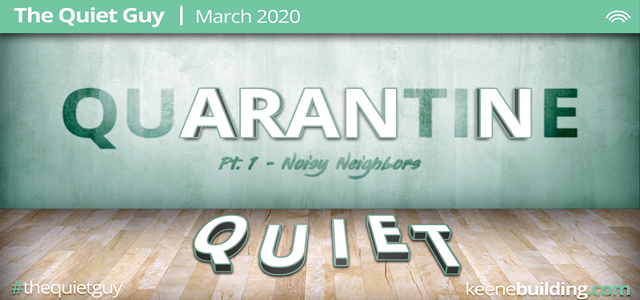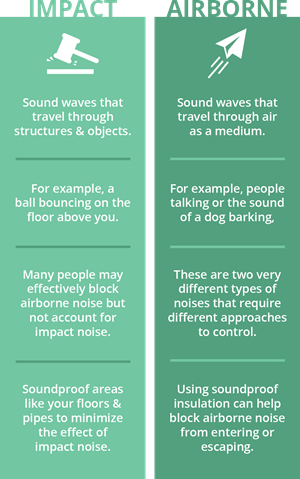
There’s no better reminder of how loud your neighbors can be than when you’re stuck inside during a government-sanctioned quarantine.
Bowling balls, elephants, the cast of “Stomp” — when you live below another apartment, it can seem like your neighbors are intentionally wreaking havoc on your sleep schedule. Chances are what’s causing the movements of those above you to sound like a conga line full of giants is poor sound attenuation.
In situations where controlling sound or noise levels is of great concern (i.e. your upstairs neighbor’s dog barking through your conference call with your boss), it becomes more and more apparent why tenants placed a “quiet living space” near above “security” and “space” when ranking desired amenities. Luckily, there are a number of specialty materials available for sound control, many of which are specially designed to provide strategic advantages that aren’t attainable with more traditional materials.
Before determining which products will work best to ensure Scruffy won’t be interrupting any future conference calls, it is important to understand the different categories for interior noise control.
SOUND ABSORBTION
Sound absorption is the capability of a surface or building material to absorb sound instead of reflecting it. Sound waves will continue to bounce around a room for a time after they are created if the majority of surfaces in a room are reflective and directly connected. Surfaces with better absorption and decoupled connection points will not allow for reflections to bounce around as much and will deaden the sound waves and vibrations more quickly. Many common building materials, such as gypsum board, wood, concrete, brick and tile, are fairly reflective and do not absorb much impact sound. In that case, any product(s) that can disconnect or decouple connection points and absorb sound waves will be the material of choice for meeting the absorption requirements of a wall, ceiling, or floor.
Our Recommendation:
AIRBORNE & IMPACT SOUND

AIRBORNE SOUND TRANSMISSION
Airborne sound transmission in interiors deals with how well sound is controlled from room to room, and from the outdoors to indoors (or vice versa) through walls and ceilings. Sound transmission loss is the decrease in sound energy when it passes through a building element. Different materials provide different levels of transmission loss and, thus, different levels of diffusion of sound.
Dense, heavy materials increase the mass of floors and walls, allowing less sound to pass through. This can be easily accomplished with varying thicknesses of gypsum concrete, lightweight concrete, drywall thickness, extra layers of plywood or OSB. Typically, concrete construction is best for airborne sound transmission on floor ceiling assemblies. Blocking airborne sound from leaking through gaps and cracks by sealing them is also effective.
IMPACT SOUND TRANSMISSION
The sound of someone stomping around on the floor above you is an impact sound transmitted through the floor ceiling assembly to the room below. As with airborne sound transmission and sound absorption, the media of building materials used in construction come into play.
The most effective way to accomplish this is by sound isolation, or Decoupling. There are two ways to decouple and isolate components in a floor ceiling assembly. The first involves separating assembly materials to “float” a floor, creating a space to stop the transfer of sound energy. These floaters can be placed between the existing floor and a new level of flooring installed on top of them. This is also the most effective method for controlling strong, mid and high-frequency impact sounds.
The second way to help decouple the system is from the ceiling side of the assembly. Wood joist floor-ceiling systems transmit a LOT of impact sound. Decoupling is crucial to improving impact sound control in this instance. Resilient channels can be effective to a degree. An effective sound isolation clip used in conjunction with the resilient channels can be extremely effective. Some of these products can increase the low frequency impact rating by as much as 5 to 8 IIC points.
Our Recommendation:
- Quiet Qurl® Sound Control Mats with Muffling Technology
- QQ Step Soft™ - Recycled Noise Control Underlayment For Hard-Surface Flooring Noise Reduction
CONCLUSION
Adequate noise control is no longer just a pesky building code requirement. It is an amenity that we too often take for granted. Our noise control products provide you with the solutions you need for impact and airborne sound control.
In other words, the next time Scruffy is yapping away because someone is walking outside, you won’t know it.
----------
For a more detailed description of how each of our products perform in different floor/ceiling assemblies to achieve proper sound attenuation, take a look at our Sound and UL Chart.